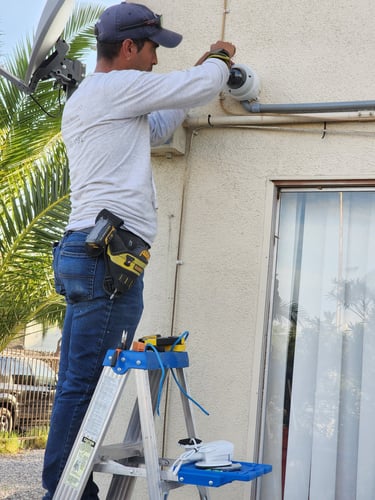Essential Types of Wiring for Surveillance System Installations
3/9/20252 min read


Introduction to Surveillance System Wiring
In the realm of home and business security, a reliable surveillance system plays a crucial role in deterring criminal activities and ensuring safety. However, the effectiveness of these systems largely depends on the proper selection of wiring. In this blog post, we will explore various types of wiring that can be utilized in surveillance system installations, along with suggestions for optimal use.
Coaxial Cable: A Traditional Choice
Coaxial cable has been a go-to option for surveillance systems for many years. Its robustness and ability to transmit high-quality video signals over long distances make it particularly suitable for CCTV setups. Coaxial cables are composed of a central conductor surrounded by insulation and shielding, which minimizes signal interference. When installing a surveillance system, ensure that you select high-grade coaxial cables for the best performance. Typical specifications include RG59 or RG6, with RG6 being preferable for greater distances.
Ethernet Cable: The Modern Solution
With the advent of IP cameras and digital technology, Ethernet cables have gained considerable popularity in the installation of surveillance systems. These cables, typically categorized as Cat5 or Cat6, facilitate the transmission of both data and power over a single cable using Power over Ethernet (PoE) technology. This not only simplifies installation but also offers flexibility in camera placement. For optimal results, choose Cat6 cables as they support higher bandwidth and are less susceptible to interference than their predecessors.
Hybrid Wiring Systems: Incorporating the Best of Both Worlds
For those looking to blend traditional and modern wiring methods, hybrid systems may be the ideal choice. These systems utilize a combination of coaxial and Ethernet wiring, allowing you to leverage existing infrastructure while upgrading to newer technology. Hybrid setups can integrate both analog and digital cameras, providing scalability as your surveillance needs evolve. When implementing a hybrid system, ensure that you have compatible converters to allow communication between different technologies seamlessly.
Conclusion: Choosing the Right Wiring for Your Surveillance System
The selection of wiring plays an integral part in the effectiveness and reliability of your surveillance system installations. Whether opting for coaxial cables, modern Ethernet wiring, or hybrid solutions, understanding their respective advantages is essential. Ensure that you assess your specific needs—such as camera resolution, distance, and potential for future upgrades—before making a decision. By choosing the appropriate wiring type, you can significantly enhance your surveillance system's performance and extend its lifespan, ensuring the optimal protection of your property.
Security
Expert solutions for your safety and peace.
Contact Us!
admin@leosafetyshop.com
+1-702-660-0081
© 2025. All rights reserved.
tech / support
